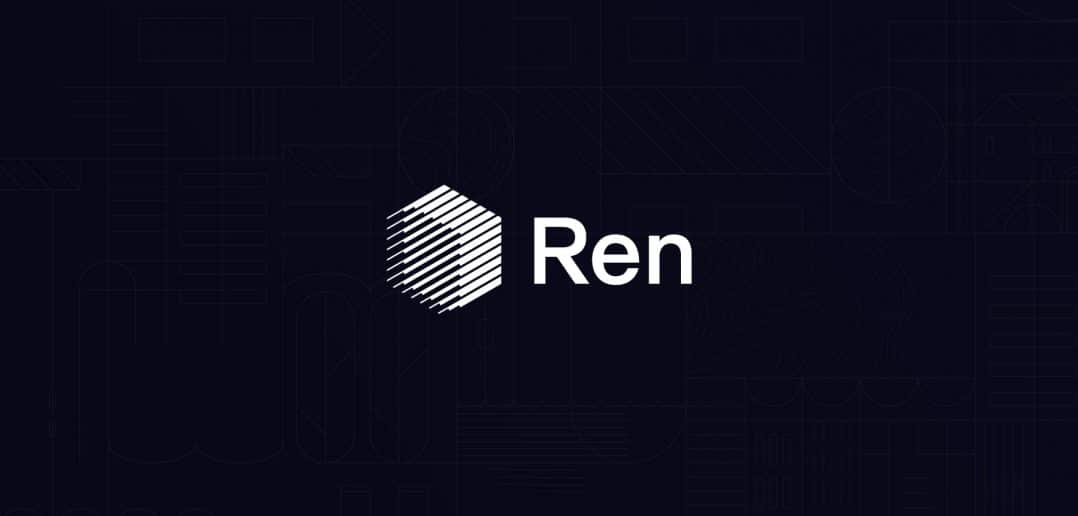
Decentralized Finance (DeFi) is one of the most expansive sectors in the crypto space. So-called “wrapped tokens” are an important DeFi building block. They allow cross-blockchain transactions. An overview of the interoperability project Ren in an interview with COO Michael Burgess.
Ren is an open protocol that enables the fluid movement of value between blockchains (interoperability). Its core product, RenVM, brings interoperability to decentralized finance (DeFi). Ren was founded in 2017 and is headquartered in Singapore. A $34 million funding round was closed in February 2018, which was followed a year later by the co-founding of WBTC.
The REN token is used as a bond to be able to run a node on the network. These nodes power the sMPC protocol (RenVM). Users need 100,000 REN to maintain a node. Various cryptocurrencies (BTC, ETH, ZEC, DOGE, etc.) serve as rewards for their contribution to the network. More information about running a node can be seen here.
A conversation with Michael Burgess, COO of the Ren Interoperability Project, on challenges and the future of decentralized finance.
CVJ.CH: The DeFi space is getting a lot of traction at the moment, what are your thoughts on the recent developments?
Michael Burgess: Prior to 2020 DeFi was more of an experiment but since the summer of 2020, DeFi has started to provide more utility and sustainable returns than traditional finance. This, in my opinion, is the catalyst and what has garnered attention from the public.
Given its global reach and composability (the ability to combine financial products and “stack them on top of each other”), DeFi’s functionality has now truly eclipsed what is possible in the traditional world, which is opening up a new era for finance.
What role does Ren play in the current crypto ecosystem?
RenVM serves as an adapter of sorts that allows liquidity (value, tokens, digital assets, etc.) to move freely between blockchains. So now almost any blockchain can take advantage of DeFi’s utility, not just Ethereum based assets. The most obvious one being BTC.
Could you explain what a “wrapped token” is and elaborate on a specific use case?
It essentially converts the token’s original format to the format of another blockchain (i.e. makes Bitcoin compatible with Ethereum). The best example is $renBTC, its $BTC but “wrapped” to fit the Ethereum token format (i.e. ERC-20).
How do you explain the recent boom for tokenized Bitcoin (e.g. renBTC & WBTC)?
It is quite simple, we along with others (WBTC, etc.) are giving BTC greater utility by providing users the ability to put in DeFi and earn yield, interest, trading fees, etc. Prior to this you could really only hold BTC and be exposed to its price; now you can do both; put it to work while maintaining price exposure.
What makes Ren different from interoperability projects such as Polkadot?
RenVM brings interoperability to existing platforms and infrastructure (e.g. Ethereum) vs. asking others to come build on our protocol. Given RenVM’s composability (the ability to plug into existing applications) it provides a very unique advantage that no other protocol has achieved to my knowledge.
Do you think regulation could be a challenge in the future and how are you dealing with it right now?
More regulation is inevitable in some form and likely a positive for the industry. With Ren being an infrastructure layer (i.e. Ethereum, Bitcoin, etc.) we believe the burden will likely fall on the end-user applications or fiat on/off ramps, which operate at the jurisdictional level.
How do you view the current role of the old and new financial world? Will these two worlds merge in the future?
Yes, they will certainly merge. It’s just a matter of time and depends on the time frame in which you view societal shifts.
Where do you see DeFi in two years and what role does Ren play?
If all goes well, DeFi should begin to serve as a foundation for a new global financial market, where value and access to products can flow freely regardless of where you are located. As for Ren, facilitating the fluid movement of value regardless of which blockchain one uses is our core mandate, so we hope to serve as the highway in which all this infrastructure is ultimately connected.
*Originally posted at CVJ.CH

